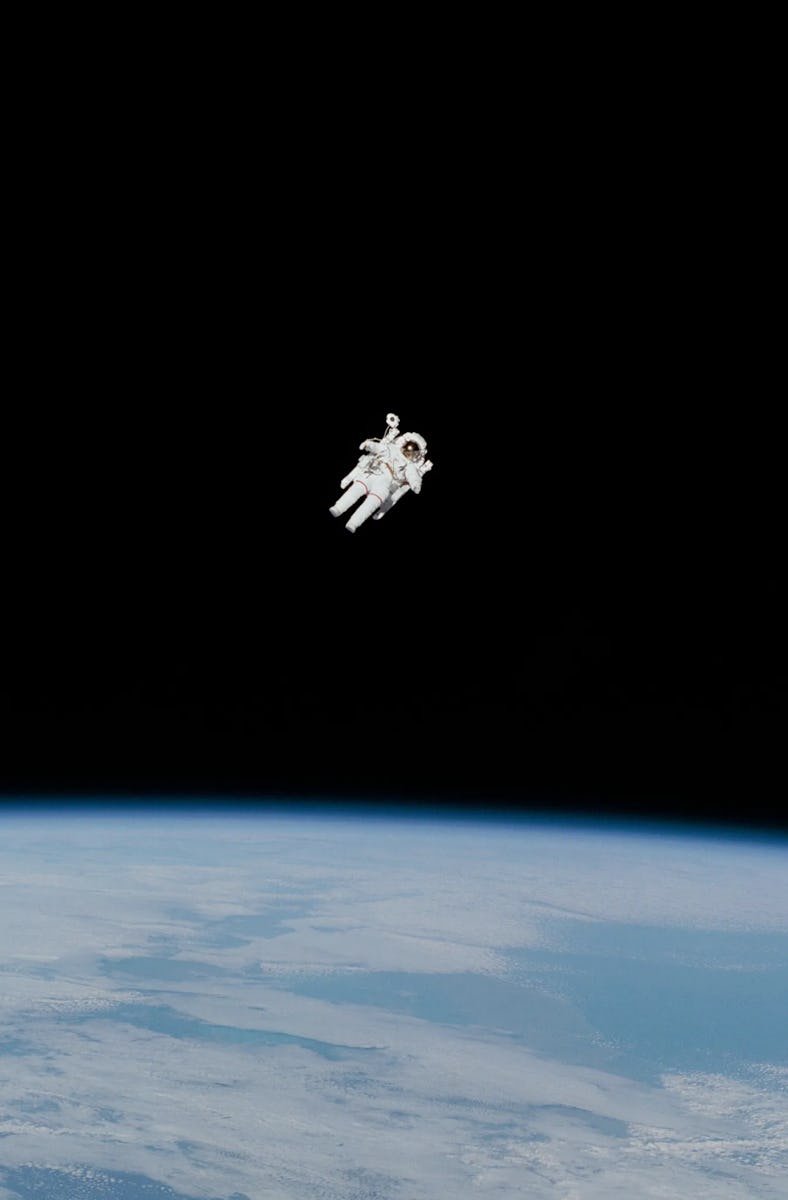40 Years Ago, NASA Astronauts Captured This Iconic Space Photo
Here’s the history behind an incredible NASA photo.

Wednesday marked the 40th anniversary of a remarkable space photo: a free-floating astronaut sailing above Earth, seemingly alone.
The Sun was striking directly onto NASA astronaut Bruce McCandless at the time of the photo, prompting him to pull down his helmet visor. That gave the astronaut armor a universal appeal: With no apparent face, anyone could pretend they were in the suit, McCandless once said. “My anonymity means people can imagine themselves doing the same thing.”
In this shot, McCandless is making history. As CAPCOM, or capsule communicator on the Apollo 11 mission, he was in charge of transmitting voice messages to the original Moonwalkers. Then, on February 7, 1984, he debuted a new technology that would carry him away from the safety of his spacecraft, putting him adrift and untethered.
NASA astronaut Bruce McCandless debuts the hand-controlled MMU backpack on February 7, 1984.
The moment is preserved in this striking photo from fellow NASA astronaut Robert “Hoot” Gibson. He snapped this image with a Hasselblad camera from the crew cabin of the Space Shuttle Challenger. Using the skills he’d learned about placing Earth’s horizon at the bottom of the frame, he tilted the camera to match Challenger’s 28.5-degree inclination in orbit. The artistic effort paid off.
The epic shot shows McCandless becoming the first person to fire the MMU, or Manned Maneuvering Unit, a hand-operated jetpack that allowed astronauts to fly freely in space.
The MMU released gaseous nitrogen propellant via a series of 24 thrusters and three gyros, all while the astronaut wearing it could control their navigation.
There were no lifelines connecting it to Challenger. The daunting flight inspired McCandless to quote his Apollo 11 colleague Neil Armstrong. “It may have been one small step for Neil,” McCandless proclaimed about the task, “but it’s a heck of a big leap for me.”
In this photo, astronaut Bruce McCandless is a few meters away from the cabin of the Space Shuttle Challenger.
The MMU was made up mostly of aluminum, and on Earth, it would weigh about 340 lbs. But the hefty backpack wasn’t a burden for McCandless, thanks to the weightlessness of the microgravity environment of low-Earth orbit.
MMU went on top of the space suit. The outfit was a life-support system that regulated the astronaut’s temperature in space, and included a pressure garment that could act like a bulletproof vest, to protect the astronauts from micrometeoroid strikes.
NASA astronauts used MMU onboard three Space Shuttle flights: on mission STS-41B (McCandless’s historic jaunt), on Challenger’s STS-41C mission, and on the Space Shuttle Discovery mission STS-51A — all in 1984.
This article was originally published on